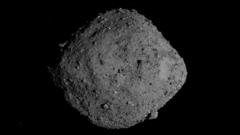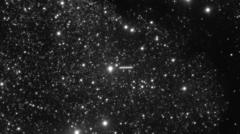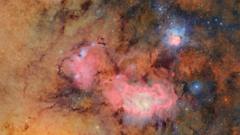Asteroid Bennu, a 500-meter-wide amalgamation of rocks and rubble, has newly yielded vital insights into the origins of life through its dust samples collected by NASA's Osiris Rex spacecraft. Researchers have discovered a plethora of organic compounds, including essential amino acids and nucleobases, vital for DNA structure. Although these findings do not confirm past life on Bennu, they lend credence to the theory that celestial bodies could have been responsible for transporting life's building blocks to Earth billions of years ago.
Professor Sara Russell, a cosmic mineralogist at the Natural History Museum in London, expressed excitement about the findings, stating, "This informs us about our origins and addresses fundamental questions regarding the emergence of life. Understanding how life began is a universal quest." The research has been published in two studies in the journal Nature.
The Osiris Rex mission, regarded as one of NASA's most ambitious undertakings, successfully retrieved approximately 120 grams of small dust particles from Bennu. These samples, although minuscule in quantity, are proving to be incredibly significant for various scientific disciplines. Russell highlighted the wealth of knowledge embedded within the grains, marking them as crucial to ongoing studies.
Detailed analyses using advanced scanning electron microscopes indicated that the Bennu samples are rich in carbon and nitrogen-based compounds. Among the findings were 14 of the 20 amino acids that compose proteins on Earth and all four essential nucleobases: adenine, guanine, cytosine, and thymine. Furthermore, researchers noted the presence of minerals and salts, hinting at prior water availability on the asteroid, alongside ammonia, which is integral for biochemical processes.
While similar organic compounds have been discovered in other meteorites that have reached Earth, many findings from Bennu represent new discoveries, igniting curiosity among scientists. Prof. Russell remarked on the exceptional nature of the findings, stating, "It's remarkable to see an array of minerals and compounds that we've not observed before in meteorites."
The study reinforces the enduring hypothesis that asteroids, like Bennu, were instrumental in delivering not just water but also organic materials to early Earth. Dr. Ashley King from the Natural History Museum provided context, explaining how the tumultuous early Solar System was fraught with asteroids repeatedly colliding with young Earth and potentially other celestial bodies.
With Earth's unique status as the only known planet harboring life, researchers are fervently exploring whether similar conditions might allow for life elsewhere in our Solar System. "We are driven to understand how and why life exists here and seek to determine if it could thrive elsewhere," Dr. King concluded.
As scientists continue to analyze the dust brought from Bennu, the ongoing research could unlock further mysteries of our cosmic neighborhood and the potential for life beyond Earth. The exploration mission has set the foundation for decades of inquiry, bringing humanity closer to unraveling the complexities and origins of life itself.
Professor Sara Russell, a cosmic mineralogist at the Natural History Museum in London, expressed excitement about the findings, stating, "This informs us about our origins and addresses fundamental questions regarding the emergence of life. Understanding how life began is a universal quest." The research has been published in two studies in the journal Nature.
The Osiris Rex mission, regarded as one of NASA's most ambitious undertakings, successfully retrieved approximately 120 grams of small dust particles from Bennu. These samples, although minuscule in quantity, are proving to be incredibly significant for various scientific disciplines. Russell highlighted the wealth of knowledge embedded within the grains, marking them as crucial to ongoing studies.
Detailed analyses using advanced scanning electron microscopes indicated that the Bennu samples are rich in carbon and nitrogen-based compounds. Among the findings were 14 of the 20 amino acids that compose proteins on Earth and all four essential nucleobases: adenine, guanine, cytosine, and thymine. Furthermore, researchers noted the presence of minerals and salts, hinting at prior water availability on the asteroid, alongside ammonia, which is integral for biochemical processes.
While similar organic compounds have been discovered in other meteorites that have reached Earth, many findings from Bennu represent new discoveries, igniting curiosity among scientists. Prof. Russell remarked on the exceptional nature of the findings, stating, "It's remarkable to see an array of minerals and compounds that we've not observed before in meteorites."
The study reinforces the enduring hypothesis that asteroids, like Bennu, were instrumental in delivering not just water but also organic materials to early Earth. Dr. Ashley King from the Natural History Museum provided context, explaining how the tumultuous early Solar System was fraught with asteroids repeatedly colliding with young Earth and potentially other celestial bodies.
With Earth's unique status as the only known planet harboring life, researchers are fervently exploring whether similar conditions might allow for life elsewhere in our Solar System. "We are driven to understand how and why life exists here and seek to determine if it could thrive elsewhere," Dr. King concluded.
As scientists continue to analyze the dust brought from Bennu, the ongoing research could unlock further mysteries of our cosmic neighborhood and the potential for life beyond Earth. The exploration mission has set the foundation for decades of inquiry, bringing humanity closer to unraveling the complexities and origins of life itself.

















